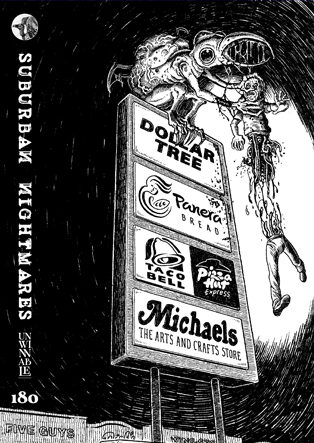
All The World’s A (Fighting) Stage
I associate the stages of the Street Fighter series and other fighting games with both meanings of the term: not just as gaming lingo for videogame settings (levels, worlds and zones), but also as the backdrops of action-packed scenes. At their best, these stages not only give a sense of the places where they’re located, but also of the characters that they might be attached to. Perhaps there are some fun cameos sprinkled in as a bonus. However, I could only experience these places within the confines of two dimensions and one-to-two-minute time limits – until Street Fighter 6 introduced World Tour Mode.
After creating an avatar character and a brief training, the mode throws you into Metro City’s Beat Square, a tutorial area where you can meander around the area in 3D. Initiate a fight, however, and the game shifts into the familiar fighting 2-D side-view. Completing the first chapter, the game opens up the rest of Metro City to explore, and later on the markets of Nayshall as well as various spots around the globe.
Running around fighting and completing various missions around Metro City in the early chapters, I had a realization: Metro City is both an explorable hub space and a collection of fighting stages. Starting a fight in the city or in Nayshall, you snap into a 2-D view of your immediate surroundings (for the most part). It’s not a perfect 1:1 recreation, but the background is still recognizably within the area you’re in.
While smaller locations, like the Dhalismer Temple in India or the Colosseo in Italy, aren’t exactly explorable, they’re still believable as spaces to visit. Cynically, these are nothing more than a box with the stage background as one of its sides. Even with my enthusiasm, the boundaries of a few of the outdoor stages require some suspension of disbelief. But by removing the time limit, these battlegrounds also become places you can visit at your leisure. The addition of friends and students of the main cast, who I can both engage in a fight and a conversation with, only adds to that idea.

The novelty is not that these stages now have multiple uses, nor is it the switching between perspectives to differentiate between exploratory and battle modes (role-playing games operate similarly). What is novel to me is how these concepts help to add additional context to the stages and how it provides a new way to interact with the world of Street Fighter.
Stories in fighting games have changed as the genre has moved from the arcades into people’s homes. Now the single player experience has become more emphasized and the presentation of these stories has changed with it. Endings were once told through some text and still images. Now, most often, we have story modes where cutscenes give context to a series of fights.
While the stories of other fighting game franchises’ installments exist as part of their overall narrative or of a specific saga, continuing the threads of prior games and leaving new ones for the next game, the Street Fighter series doesn’t have the same kind of forward momentum. Much like its stages, the overall story is experienced in bursts of action, making it feel less like a narrative and more like an accumulation of events. The only time the series tends to have any intentional direction is in the “inter-quel” entries because the game must lead somewhere specific.
Ironically, this mode provides something of a pause for the shared Street Fighter/Final Fight universe. Unlike prior Street Fighter games, where I was thrown out of the world as easily as I was thrown in, I’m encouraged to wander around at my own pace. While this is not a purely peaceful period of time with the disparate remnants of Shadaloo re-emerging, it is the calmest that I’ve gotten to experience. With the slower pace, things that were once perhaps considered trivial or simple set dressing can be engaged with in different ways.

One great example of this is my interactions with Guile, who was finally able to go home and be a family man. I’ve learned of his family trips to visit Dhaslim’s family and taking his daughter to a Dee Jay concert. These details provide a glimpse of Guile’s life without the shadow of M. Bison eclipsing it. What interested me the most was his concern for Ken, after he was framed for the “Nayshall incident”. Using what was once simple trivia, that Ken and Guile are brothers-in-law, now gives Guile a compelling motivation going forward: to help family, he’s going to find the real perpetrators. None of this could be learned if my only way of interaction with him was through fighting.
Through World Tour mode, the developers made a world that feels like it exists beyond my presence. Not through empty nostalgia, but through understanding the foundational elements they already had at their disposal. In a series where defeating M. Bison (or Seth or Gill) results in the world being saved, having that world feel more real makes the stakes even more evident. Whatever future threat comes the World Warriors’ way, I know part of my motivation is ensuring that E. Honda’s Chanko House Edomon restaurant (and sumo ring) in Metro City is still standing.
———
Alex J. Tunney is from Long Island, which may explain all the writing about video games, food and reality TV. You can find all of his writing collected at alexjtunney.com.


